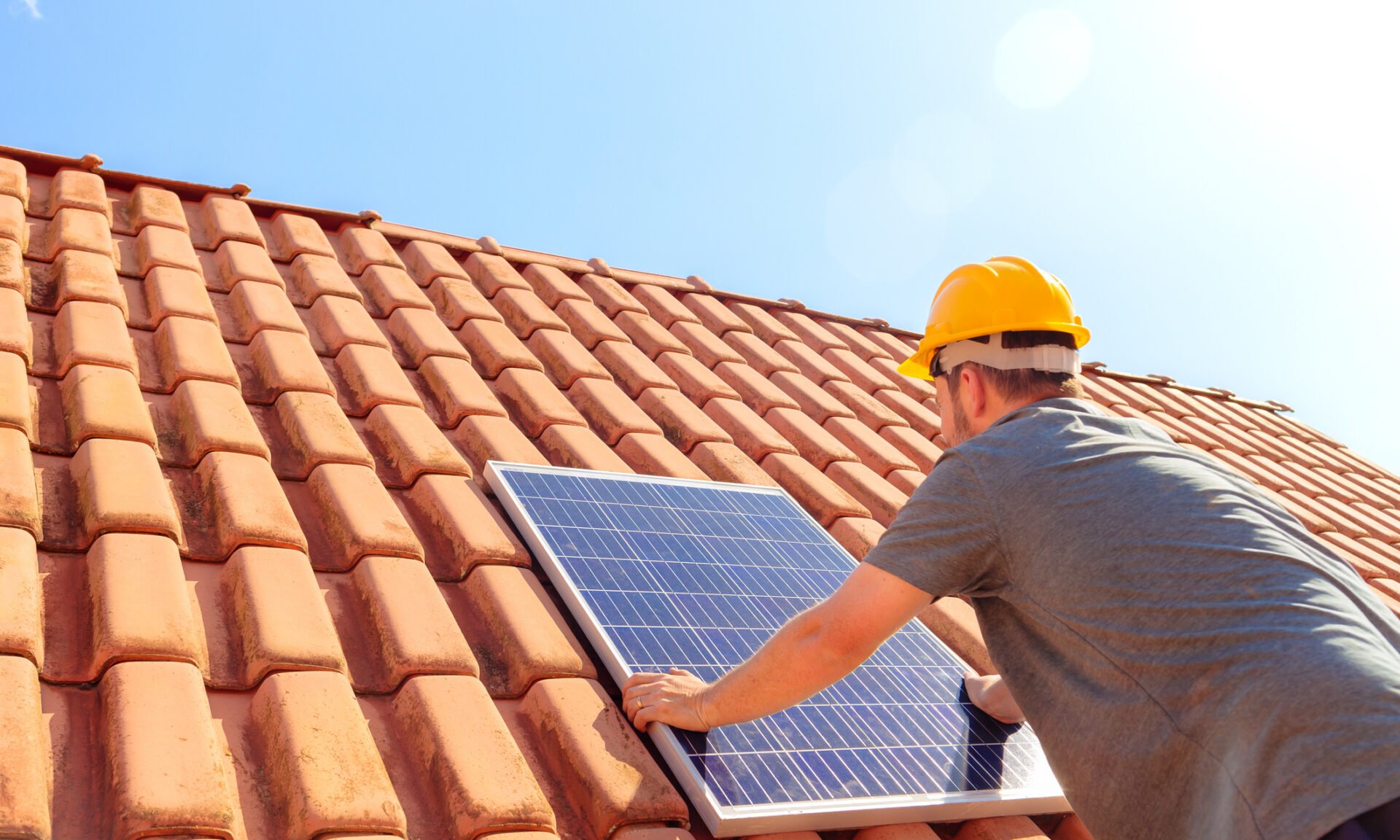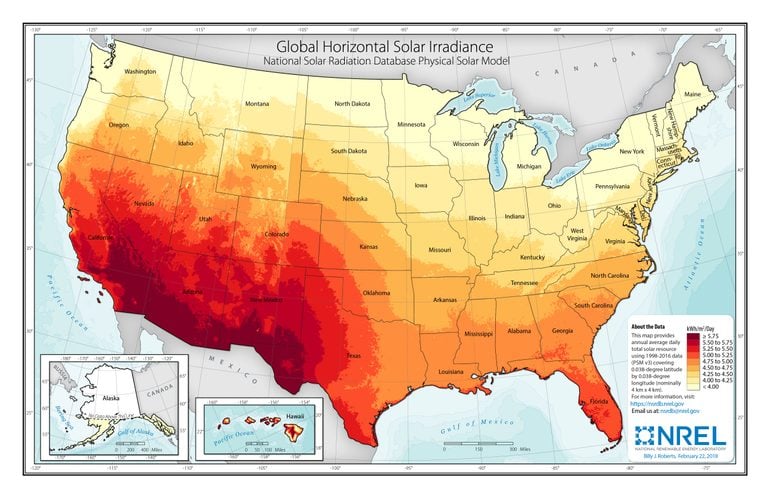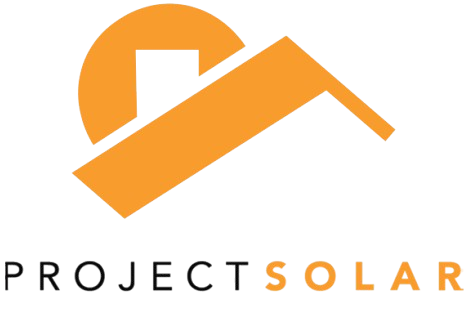How Many Solar Panels Do I Need?
There's a way to calculate how many solar panels it may take to meet your power needs.

Some or all of the mortgage lenders featured on our site are advertising partners of NerdWallet, but this does not influence our evaluations, lender star ratings or the order in which lenders are listed on the page. Our opinions are our own. Here is a list of our partners.
A typical home needs about 17 to 30 solar panels, according EnergySage, a solar and home energy product comparison marketplace . This wide range reflects the many variables involved, such as energy use and amount of sunshine. For an average system size of 8.1kW in sunny California, you’ll need about 20 panels.
How to calculate how many solar panels you need for your house
To calculate how many panels you need, you can use this formula:
Number of panels = annual electricity use ÷ solar panel production ratio ÷ solar panel output
The following steps guide you through the formula.
1. Find your home’s annual electricity usage
Your electricity use is measured in kilowatt-hours (kWh). To determine how much electricity your home uses, look at your electric bill history, usually available online at your utility’s website. If your gas bill is combined with your electric bill, look at the portion of your bill that’s for electricity. You’ll need to add up 12 months of electric bill data; if your utility is one of a growing number that provides Green Button data from the U.S. Department of Energy, you can use that to download a spreadsheet of your bill history and quickly calculate the total kWh for a year .
2. Find the production ratio for your location
Solar production ratio is the ratio of a solar panel’s estimated energy output over time to its size. The production ratio depends on your location, because some regions get more sun per day than others, increasing a solar panel’s energy output . You can look up your state’s solar production ratio on this map created by EnergySage.
3. Determine the output of your solar panels
Your solar panel output is measured in watts. Once you have quotes from installers, they will specify the output of the proposed panels. To calculate how many panels you’ll need before you get quotes, you can use 400W, the typical output for today’s residential solar panels.
4. Calculate how many panels you need
Let’s say your home uses 10,791 kWh annually, the average in the U.S. If your production ratio is 1.5, like it is for my home in California, you’ll need 18 panels to cover all of your home’s energy usage:
10,791 ÷ 1.5 ÷ 400 = 17.99 panels
Using this formula gives you a rough, high-level estimate. Your solar installer can refine your system sizing, taking into account the factors detailed below.
Factors that affect how many solar panels you need
The exact number of solar panels you’ll need depends on these factors:
Your current electricity use
The key factor in determining the number of panels you need is how much electricity you use. If you have enough space on your roof, you’ll likely want enough solar panels to cover all of your electricity use.
Your future electricity use
Do you expect your family to grow? Are you planning to switch to an electric car or a heat pump? Will you be adding a refrigerator, pool, or air conditioning? It’s more cost-effective to install enough solar now to cover expected future use; that can also protect your investment if solar programs in your area, such as net metering, are phased out later.
The amount of sun you get
The more sun you get, the more electricity your solar panels can generate and the fewer panels you’ll need to cover your electricity use. You can get an idea of the solar resource in your area from the National Renewable Energy Laboratory (NREL) solar irradiance map.

Panel wattage and efficiency
Today’s typical residential solar installations use 400W panels, with an average range from 350W to 450W. Panels today have an average efficiency of 21% (with some up to 23% efficient), meaning that they convert 21% to 23% of the sunlight that hits them into electricity . Higher-watt and higher-efficiency panels produce more energy but tend to cost more than their lower-watt and lower-efficiency counterparts. If your roof space is limited, you may be limited in how many panels you can have installed. In that case, you may want to consider higher-efficiency, higher-watt panels.
Your roof
How many panels you can have installed depends in part on the size of your roof, but there’s more to it than that. You’ll also need to consider the shape of the roof, whether it has obstructions such as vents and skylights, and whether it’s subject to shading from trees or buildings.
Your roof’s orientation also affects the number of panels you need; panels will generate the most energy on a south-facing roof, followed by east- and west-facing roofs . Of course, your roof must be in good condition to be able to support the weight of the panels. After providing an initial quote using online tools, your installer will conduct a site visit to assess the condition of your roof and determine how many panels you can fit on it. If you can’t fit enough panels on your roof to cover all your electricity needs, it may still be worth covering a portion of your electricity.
Can I get financing for a solar panel system?
In addition to tax incentives and rebates, there are options available. Many solar installers offer financing, but you may also be able to finance your solar investment through a home equity loan or home equity line of credit (HELOC). These options may have lower interest rates than financing with an installer, future opportunities for refinancing and possible tax benefits.
Home equity loans and HELOCs are ways to borrow against the value of your home, converting equity into cash. With a home equity loan, you receive a lump-sum payment and then pay it back at a fixed interest rate over an agreed period of time, typically from five to 30 years. HELOCs are more akin to a credit card, something you use as needed. You’ll usually have 10 years to draw from the line of credit, during which time you only have to pay interest, and after that you pay both the principal and interest. HELOC interest rates typically are variable, meaning your monthly payment could rise or fall over time. And with each of these options, you're using your home as collateral.
Advertisement
Min. credit score 600 | Min. credit score 600 |
Min. down payment N/A | Min. down payment N/A |
Another option is a solar loan. Many banks, credit unions and online lenders offer these to fund solar panels and installation, with amounts typically from $1,000 to $100,000, and annual percentage rates ranging from 6% to 36%. They function like a personal loan: you receive a lump sum and repay it in equal monthly installments over a set period, typically two to seven years. And unlike with home equity financing, there is no collateral required for a solar loan. This means your home or solar panels aren’t at risk if you miss payments, but you may have to pay late fees.
So, yes, you likely can get financing. If you go this route, compare interest rates, terms and fees with any financing package that a solar provider may offer you to ensure you get the best deal.
Frequently Asked Questions
Does my house size affect how many panels I need?
Although house size may be a factor in how many panels you need, a much more significant factor is your electricity use. You are likely to use more electricity if you have a bigger house, but that might not be the case if your family is small and your house is energy-efficient.
Can I install more solar panels than I currently need?
If you expect your electricity use to increase, it’s a good idea to size your system for those future needs. Some utility companies have restrictions on system sizes, so check with your local utility to see how large they will let you size your system.
Article sources
NerdWallet writers are subject matter authorities who use primary,
trustworthy sources to inform their work, including peer-reviewed
studies, government websites, academic research and interviews with
industry experts. All content is fact-checked for accuracy, timeliness
and relevance. You can learn more about NerdWallet's high
standards for journalism by reading our
editorial guidelines.
- 1. EnergySage. How many solar panels do I need for my home in 2024?. Accessed Oct 17, 2024.
- 2. U.S. Department of Energy. Green Button. Accessed Oct 17, 2024.
- 3. U.S. Department of Energy. Optimizing Solar Photovoltaic Performance for Longevity. Accessed Oct 17, 2024.
- 4. National Renewable Energy Laboratory. Champion Photovoltaic Module Efficiency Chart. Accessed Oct 17, 2024.
- 5. U.S. Department of Energy. Homeowner’s Guide to Going Solar. Accessed Oct 17, 2024.
More like this
Related articles
AD
Save On Solar Without the Middleman
Free Instant Quote
on Project Solar's website

AD

Save On Solar Without the Middleman
- $750 OFF install with NerdWallet;
- SolarCare™: top-tier warranty & 25-year production guarantee;
- No sales commissions mean premium equipment & tech at up to half the price.

Free Instant Quote
on Project Solar's website











